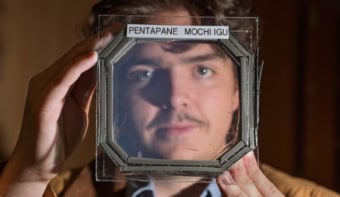Venkat Srinivasan is the director of the Argonne Collaborative Center for Energy Storage Science (ACCESS) at Argonne National Laboratory in DuPage County, Illinois, US. Margaret Harris spoke to him about the lab’s research on battery technologies and the associated scientific, technological and policy challenges

Which battery technologies are you focusing on at Argonne?
We work on everything. We work on lead-acid batteries, a technology that’s 100 years old, because the research community is saying, “If only we could solve this problem with cycle life in lead-acid batteries, we could use them for energy storage to add resilience to the electrical grid.” That’s an attractive prospect because lead-acid batteries are extremely cheap, and you can recycle them easily.
We work a lot on lithium-ion batteries, which is what you find in your electric car and your cell phone. The big challenge there is that lithium-ion batteries use nickel and cobalt, and while you can get nickel from a few places, most of the cobalt comes from the Democratic Republic of Congo, where there are safety and environmental concerns about exactly how that cobalt is being mined, and who is doing the mining. Then there’s lithium itself. The supply chain for lithium is concentrated in China, and we saw during COVID the problems that can cause. You have one disruption somewhere and the whole supply chain collapses.
We’re also looking at technologies beyond lithium-ion batteries. If you want to start using batteries for aviation, you need batteries with a long range, and for that you have to increase energy density. So we work on things like solid-state batteries.
Finally, we are working on what I would consider really “out there” technologies, where it might be 20 years before we see them used. Examples might be lithium-oxygen or lithium-sulphur batteries, but there’s also a move to go beyond lithium because of the supply chain issues I mentioned. One alternative might be to switch to sodium-based batteries. There’s a big supply of soda ash in the US, which is the raw material for sodium, and sodium batteries would allow us to eliminate cobalt while using very little nickel. If we can do that, the US can be completely reliant on its own domestic minerals and materials for batteries.
What are the challenges associated with these different technologies?
Frankly, every chemistry has its challenges, but I can give you an example.
If you look at the periodic table, the most electronegative element is lithium, while the most electropositive is fluorine. So you might think the ultimate battery would be lithium-fluorine. But in practice, nobody should be using fluorine – it’s super dangerous. The next best option is lithium-oxygen, which is nice because you can get oxygen from the air, although you have to purify it first. The energy density of a lithium-oxygen battery is comparable to that of gasoline, and that is why people have been trying to make solid-state lithium-metal batteries since before I was born.

The problem is that when you charge a battery with a lithium metal anode, the electrolyte deposits on the lithium metal, and unfortunately it doesn’t create a thin, planar layer. Instead, it forms these needle-like structures called dendrites that short to the battery’s separator. Battery shorting is never a good thing.
Now, if you put a mechanically hard material next to the lithium metal, you can stop the dendrites from growing through. It’s like putting in a concrete wall next to the roots of a tree to stop the roots growing into the other side. But if you have a crack in your concrete wall, the roots will find a way – they will actually crack the concrete – and exactly the same thing happens with dendrites.
So the question becomes, “Can we make a defect-free electrolyte that will stop the dendrites?” Companies have taken a shot at this, and on the small scale, things look great: if you’re making one or two devices, you can have incredible control. But in a large-format manufacturing setup where you’re trying to make hundreds of devices per second, even a single defect can come back to bite you. Going from the lab scale to the manufacturing scale is such a challenge.
What are the major goals in battery research right now?
It depends on the application. For electric cars, we still have to get the cost down, and my sense is that we’ll ultimately need batteries that charge in five minutes because that’s how long it takes to refuel a gasoline-powered car. I worry about safety, too, and of course there’s the supply-chain issue I mentioned.
But if you forget about supply chains for a second, I think if we can get fast charging with incredibly safe batteries while reducing the cost by a factor of two, we are golden. We’ll be able to do all sorts of things.

For aviation, it’s a different story. We think the targets are anywhere from increasing energy density by a factor of two for the air taxi market, all the way to a factor of six if you want an electric 737 that can fly from Chicago to Washington, DC with 75 passengers. That’s kind of hard. It may be impossible. You can go for a hybrid design, in which case you will not need as much energy density, but you need a lot of power density because even when you’re landing, you still have to defy gravity. That means you need power even when the vehicle is in its lowest state of charge.
The political landscape in the US is shifting as the Biden administration, which has been very focused on clean energy, makes way for a second presidential term for Donald Trump, who is not interested in reducing carbon emissions. How do you see that impacting battery research?
If you look at this question historically, ReCell, which is Argonne’s R&D centre for battery recycling, got established during the first Trump administration. Around the same time, we got the Federal Consortium for Advanced Batteries, which brought together the Department of Energy, the Department of Defense, the intelligence community, the State Department and the Department of Commerce. The reason all those groups were interested in batteries is that there’s a growing feeling that we need to have energy independence in the US when it comes to supply chains for batteries. It’s an important technology, there’s lots of innovations, and we need to find a way to move them to market.

Virtual lab, real-world challenges
So that came about during the Trump administration, and then the Biden administration doubled down on it. What that tells me is that batteries are largely bipartisan, and I think that’s at least partly because you can have different motivations for buying them. Many of my neighbours aren’t particularly thinking about carbon emissions when they buy an electric vehicle (EV). They just want to go from zero to 60 in three seconds. They love the experience. Similarly, people love to be off-grid, because they feel like they’re controlling their own stuff. I suspect that because of this, there will continue to be largely bipartisan support for EVs. I remain hopeful that that’s what will happen.
- Venkat Srinivasan will appear alongside William Mustain and Martin Freer at a Physics World Live panel discussion on battery technologies on 21 November 2024. Sign up here.



